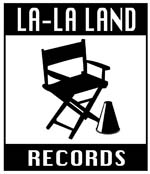What a lovely and fitting coincidence to have both scores composed by James Horner for the adventures of Jack Ryan released in extended versions within a month. Indeed, after Clear And Present Danger (1994) in June from Intrada, it was La-La Land Records’ turn to offer us Patriot Games (1992), which contains more than thirty minutes of previously unreleased music.
This is an underestimated score and, despite its cold aspect (the horns and Tony Hinnigan’s pipes and flutes are not present) and some less accessible electro-percussive parts, Patriot Games deserves a second chance. The strength of this new limited edition of 3,000 copies is its development of every aspect of the soundtrack, thus promoting a better understanding of its narrative structure. Expanded, the musical ideas are more consistent. Their meanings then become clearer and more explicit, while revealing James Horner's intentions.
[divider]War injury[/divider]
"The Irish people. They are so unfortunate that they have always feasted death like a friend, and that no danger can move away from a funeral."Pierre JO Chauveau – Charles Guerin: novel of Canadian manners, 1853
In London, Jack Ryan witnesses an assassination attempt by Irish terrorists on Lord Holmes, a cousin of the Queen of the United Kingdom. He manages to thwart the attack, but kills Paddy Boy, Sean Miller's brother, who will seek to avenge his death at all costs. Very few scenes in the film take place in Ireland and yet many musical colors associated with this country are present in the score. The reason is simple: beyond the fact that in Tom Clancy's novels Jack Ryan is of Irish origin, his adversaries are part of a dissident wing of the IRA, a nationalist paramilitary organization fighting the British authority in order to achieve their country’s unity and independence. In the film, the rebels’ attacks thus echo decades of strife and civil war, which have devastated Irish families.
This underlying suffering is reflected in the very first seconds of the Main Title through the sudden introduction of the bodhráns. The heavy atmosphere gets heavier when a melancholy violin is heard through two tense notes. This motif is an expression of revenge and death in their most frigid aspects and appears in the album whenever the Irish terrorists are featured. For example, it starts and closes this opening cue, expands alongside synthetic vocals in Sean's Interrogation, accompanies the scene where bomb makers are arrested (Arrest of the Bombers), and follows the search for one of the members on satellite images (Girl in Photo). Its coldest appearance is heard in Higland's Execution during Sean Miller’s deadly escape from the prison on the Isle of Wight, as a violin plays with a pan flute and a funereal chant by Maggie Boyle. This orchestration will logically return two years later in the cue, Revenge from Legends of the Fall, to bind events of similar notions: revenge and death.

Highland's Execution (Patriot Games) – Revenge (Legends of the Fall)
When the coldness of death stirs the fire of revenge.
When the coldness of death stirs the fire of revenge.
The Main Title maintains a heavy atmosphere with a traditional song, The Quiet Land Of Erin, by Maggie Boyle. This lament comes from a Gaelic poem written in 1750 by an exile, John McCambridge, who expresses his dream of returning home. It will be beautifully developed in the Closing Credits with the addition of a piano à la Thunderheart, a Hornerian touch in a folkloric orchestration. Note that two versions of the Closing Credits are included in this expanded edition: the album version already available in the 1992 edition that, placed here at the end of the second disc, offers the Gaelic version, while the film's version, placed after Boat Chase – Aftermatch, blends Gaelic and English lyrics.
Once the framework is established and the movie’s title is past, James Horner can then bring movement to his music to follow the flyover of the forest close to the Ryans' house. 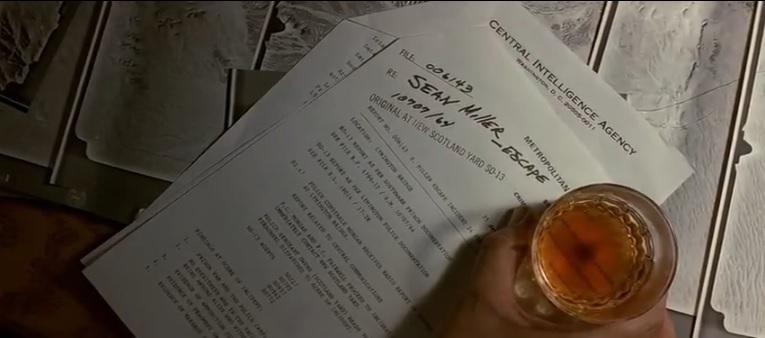 There is a superb progression with the harps and the strings from which a first theme arises, played by two whistles (and which could have been the main theme, had it been used more often). This theme then flourishes with Maggie Boyle's voice during Sean's escape (Higland's Execution), already mentioned above, then gradually returns: in the middle of the album and without the original Celtic orchestration in Reading To Sally, in Sean's Midnight Call when Jack Ryan consults the police report on the escape, and at the beginning of the second disc (Boat Chase – Aftermath), during the final boat chase and its conclusion.
There is a superb progression with the harps and the strings from which a first theme arises, played by two whistles (and which could have been the main theme, had it been used more often). This theme then flourishes with Maggie Boyle's voice during Sean's escape (Higland's Execution), already mentioned above, then gradually returns: in the middle of the album and without the original Celtic orchestration in Reading To Sally, in Sean's Midnight Call when Jack Ryan consults the police report on the escape, and at the beginning of the second disc (Boat Chase – Aftermath), during the final boat chase and its conclusion.
 There is a superb progression with the harps and the strings from which a first theme arises, played by two whistles (and which could have been the main theme, had it been used more often). This theme then flourishes with Maggie Boyle's voice during Sean's escape (Higland's Execution), already mentioned above, then gradually returns: in the middle of the album and without the original Celtic orchestration in Reading To Sally, in Sean's Midnight Call when Jack Ryan consults the police report on the escape, and at the beginning of the second disc (Boat Chase – Aftermath), during the final boat chase and its conclusion.
There is a superb progression with the harps and the strings from which a first theme arises, played by two whistles (and which could have been the main theme, had it been used more often). This theme then flourishes with Maggie Boyle's voice during Sean's escape (Higland's Execution), already mentioned above, then gradually returns: in the middle of the album and without the original Celtic orchestration in Reading To Sally, in Sean's Midnight Call when Jack Ryan consults the police report on the escape, and at the beginning of the second disc (Boat Chase – Aftermath), during the final boat chase and its conclusion.
To finish with Irish colors, we must emphasize the importance of musical phrases played by tin whistles throughout the score. Indeed, the use of Irish flutes is not reduced to their inclusion mentioned in the Main Title, they truly serve the drama of the film. Witthin the second cue, Attempt on the Royals, they accompany shots of the Holmes and the Ryans, who will be affected by the bombings in London, and after the explosion they musically correspond to a sense of tinnitus. Associated with this key event for the rest of the plot, they come back to haunt Sean in prison (Sean Obsessing in Jail) when the latter pastes the photo of Jack Ryan in an article about the incident. Enriched with a reverb effect, they produce the effect of a memory that gradually consumes his mind. Thus, like an obsessive torment, they will haunt the attack scenes throughout the film, appearing when the killers responsible for eliminating Jack Ryan are shown on screen (The Hit, Assault on Ryan's House, Boat Chase).
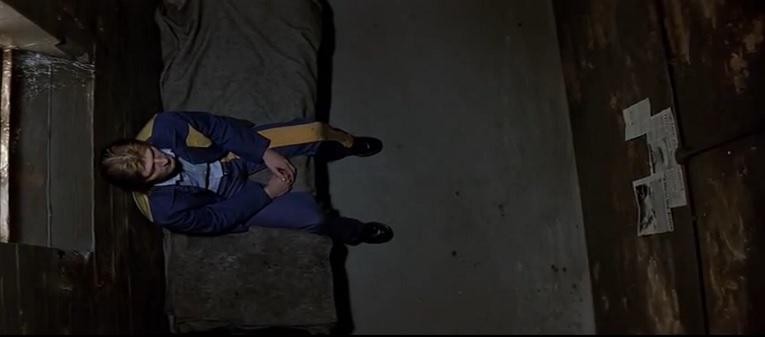
The Irish orchestration is at the heart of Patriot Games. But unlike a score such as The Devil's Own (1996), where folk instruments provide warmth and conviviality, here bodhrán hits are aggressive, the lone violin is disenchanted, the flute notes are sharp… So many elements that give Patriot Games this austere flavor, this harsh and icy aspect that is ideal for a thriller.
[divider]A small private war[/divider]
"The war is perhaps the revenge of animals we killed."Jules Renard – Extract from his Journal 1887-1892
The four major action cues were already included on the 1992 album, but this new edition provides a fresh look at their construction and place with respect to the overall score.
The orchestral approach of Attempt on the Royals and Boat Chase is justified because these pieces support jack Ryan's actions, his values and his resistance to attacks made on the innocent and on his family. The synthetic material that is the essence of The Hit and Assault on Ryan's House is in alignment with the percussive, electronic, and dissonant orientation that James Horner chose to illustrate the actions of terrorists, and it is what we find in most of the unreleased tracks. It would ultimately be awkward to set an orchestral dimension to the small war led by Sean Miller, as his wrongdoings do not conform to any form of heroism and have only one goal: to harm and to eliminate everything that will stand between him and the American who killed his brother.
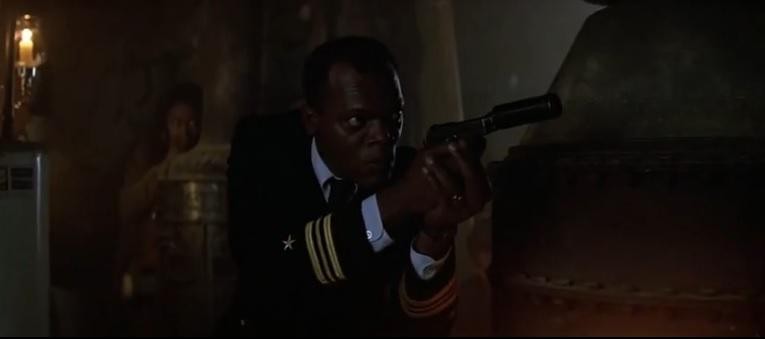
This musical foursome is rich in quality and forms the sparkling core of Patriot Games:
Attempt on the Royals starts on the last demonstration of humanity that Sean Miller will have towards his young brother just before the attack. James Horner manages to instill a constant dynamic by making this piece beguiling from the first listen. The work on the percussion and on the strings is quite impressive and heralds the dark Poachers of Mighty Joe Young (1998). During the exchange of fire between the terrorists and Jack Ryan, vivid strings and a riotous xylophone kick off a breathless musical phrase worthy of the orchestral jewel that is Coast Guard Rescue in The Perfect Storm (2000).
Boat Chase begins with imposing trombones announcing the final confrontation, somewhat in the way of Tournament Time in The Karate Kid (2010). Frantic strings and discordant chimes twirl to the rhythm of the storm raging at sea. Echoes of Aliens evoke the culmination of Sean Miller’s obsession, ready to kill his own compatriots just to exact revenge on Jack Ryan. This is quite logical because when listening to three unreleased cues of the album, Sean's dark thoughts are every time highlighted by creepy and synthetic squeaks already experienced in James Cameron's film. We can hear such sounds in Two-Edged Monitor, which is not featured in the film; at the end of Trial Sean when Sean Miller angrily threatens Jack Ryan in court; then at the beginning of Sean Obsessing in Jail when the Irish terrorist feeds his revenge obsession. This last piece is also informative as we find the origins of the synthetic substance that form the mold into which James Horner will shape Arrest of the Bombers and especially the duo, The Hit / Assault on Ryan's House.
These two tracks are incredibly audacious. Their lengths make it possible to gradually intensify the suspense of each sequence they illustrate. When they start on screen, they immediately provide a palpable tension. In symbiosis with the images, the music starts and reveals the threat to Jack Ryan's family: The Hit starts on a shot of a terrorist’s hand rolling up one of his sleeves to reveal a watch and a gun in the background; Assault on Ryan's House starts as Jack Ryan's hand draws a curtain, thus showing the public lighting that still works, and proves at the same time that the power outage at his home is not innocuous.
James Horner uses no less than ten percussionists and his faithful keyboardists, Ralph Grierson and Ian Underwood, to deploy a variety of raw sounds that add to each other. This may seem in disarray during the first listen, but appearances are deceiving because the sonic make-up carries meaning in each moment. Indeed, the great success of these long pieces and of the unique Cooley Escapes is to offer a multitude of synchronization points between the actions of the characters, cinematic cuts, and the notes, the percussion, and the synthesizers. There are so many of them that their analysis would require an entire article. However, let us return to the moment when Jack Ryan realizes that his family is in danger and rushes to his car: the acceleration of the pace that accompanies this action (The Hit at 3:27) is a thrilling moment of music set to image.
[divider]Russians at the CIA![/divider]
The Hit ends on the car driven by Jack Ryan's wife violently running off the road. Their daughter is severely injured. In the unreleased cue Hospital Vigil, James Horner has the opportunity to provide a tender pause, in which he holds a secret. The harp and the oboe form a moving duet when Jack is at his wife's bedside when she awakes, and when he tells her the injuries of their child 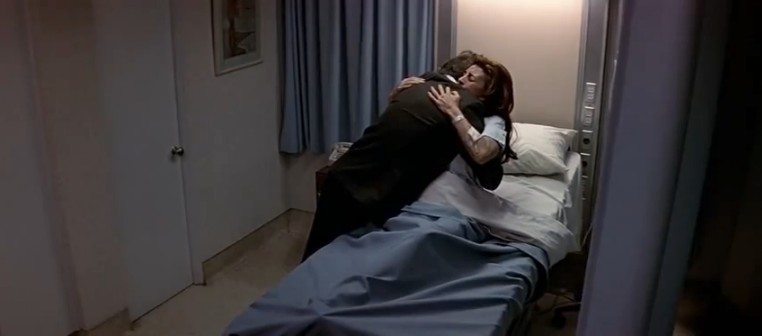 (note that an alternate version is available on the second disk, which has bells added in the orchestration). Then double-basses follows the darkening look of the father's face, grimly determined to make every effort to protect her and stop the actions of Sean Miller and of his compatriots. The following lively bit marks his return to the CIA and calls out the same energy we will find two years later in Operation Dynamic Reciprocity of Clear And Present Danger. The conclusion of the piece called Studying Sean's File, at 2:40, starts the last axis of the score: the quote from Aram Khachaturian's adagio from the Gayane ballet (1942), which, in its original version, features a young Armenian woman whose patriotic convictions conflict with her personal feelings.
(note that an alternate version is available on the second disk, which has bells added in the orchestration). Then double-basses follows the darkening look of the father's face, grimly determined to make every effort to protect her and stop the actions of Sean Miller and of his compatriots. The following lively bit marks his return to the CIA and calls out the same energy we will find two years later in Operation Dynamic Reciprocity of Clear And Present Danger. The conclusion of the piece called Studying Sean's File, at 2:40, starts the last axis of the score: the quote from Aram Khachaturian's adagio from the Gayane ballet (1942), which, in its original version, features a young Armenian woman whose patriotic convictions conflict with her personal feelings.
 (note that an alternate version is available on the second disk, which has bells added in the orchestration). Then double-basses follows the darkening look of the father's face, grimly determined to make every effort to protect her and stop the actions of Sean Miller and of his compatriots. The following lively bit marks his return to the CIA and calls out the same energy we will find two years later in Operation Dynamic Reciprocity of Clear And Present Danger. The conclusion of the piece called Studying Sean's File, at 2:40, starts the last axis of the score: the quote from Aram Khachaturian's adagio from the Gayane ballet (1942), which, in its original version, features a young Armenian woman whose patriotic convictions conflict with her personal feelings.
(note that an alternate version is available on the second disk, which has bells added in the orchestration). Then double-basses follows the darkening look of the father's face, grimly determined to make every effort to protect her and stop the actions of Sean Miller and of his compatriots. The following lively bit marks his return to the CIA and calls out the same energy we will find two years later in Operation Dynamic Reciprocity of Clear And Present Danger. The conclusion of the piece called Studying Sean's File, at 2:40, starts the last axis of the score: the quote from Aram Khachaturian's adagio from the Gayane ballet (1942), which, in its original version, features a young Armenian woman whose patriotic convictions conflict with her personal feelings.
This is one of the composer's favorite references. From the interstellar void of Aliens to lifeless ruins of Enemy at the Gates, through Project X and many others, James Horner studied that movement so much that it is an integral part of his musical discourse. The La-La Land Records release shows us how much this quote haunts this score. By the third track (CNN News Report), it appears on the images of terrorists covering up their traces. The following part of that piece also evokes all the coldness and hardness of the strings that roam the city of Stalingrad in Jean-Jacques Annaud's film.
Then it accompanies all the research work performed by Jack Ryan at the CIA in Studying Sean's File, Putting the Pieces Together, Reading to Sally Two-Edged Monitoring.
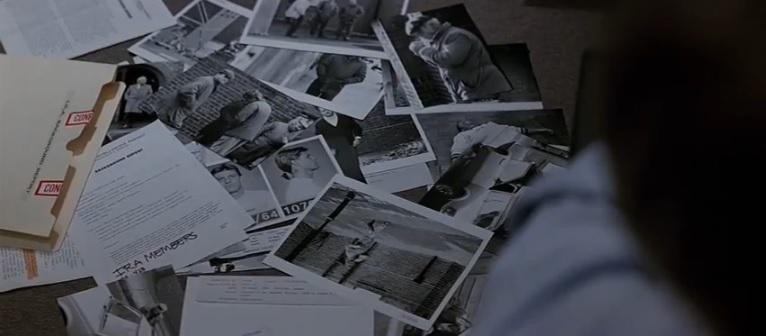
Jack Ryan seems to tirelessly work day and night to find Sean and his accomplices who found refuge in a terrorist training camp in Libya. His investigation compels him to relive his memories of the bombings in order to recall any important clue: for example, the red hair of the terrorist Annette. The music is an ideal lullaby for the slow gathering of the various pieces of the puzzle in the American agent’s mind.
Finally, the reference to the Gayane ballet completely dominates Electronic Battlefield, which accompanies the scene of the attack on the terrorist camp, observed via satellite video. It joins the burst of strings themselves referring to the Largo of Dmitri Shostakovich’s 5th Symphony, a heartbreaking prayer for the victims and heroes of the revolution who died for their country, which has a legitimate place in this virtual and yet actual evocation of an armed conflict. Electronic Battlefield condenses James Horner’s love for Russian music and marks the successful merger of two of the most beautiful slow pieces of the repertoire to brilliantly illustrate the coldness of the technological war.

Electronic Battlefield (Patriot Games) – Bluebeard's flight (Project X)
Technology in the service of detachment and indifference to death.
Technology in the service of detachment and indifference to death.
The composer is quite daring in finding inspiration in works from Russian composers to illustrate a story with US characters at the end of the Cold War. This is the composer’s musical science which makes it possible for this transposition to work both on screen and as an isolated listening. The version of Electronic Battlefield without the ending electronic percussion on the second disc allows us to truly appreciate the classical dimension of this piece of music and its affiliation with the Soviet music that inspired it.

Sergueï Prokofiev, Dmitri Chostakovitch, Aram Khachaturian
[divider]The games have been played[/divider]
Not everyone may enjoy the music of Patriot Games. The atmosphere of the film, its colors, its photography, its thematic elements leave very little room for warmth and immediate pleasure. And there is a logic that informs the score, lending an overly cold atmosphere. Its main quality is to perfectly fit the scenes of the movie by adding an extra soul and avoiding common pitfalls: boredom over time, American triumphalism, and sentimentality during emotional moments.
The Celtic instruments are real boosters of the drama, the action cues are complex in their content and in their approach, and James Horner’s careful consideration sets to music the psychology of tormented characters. All these elements make Patriot Games a solid, audacious and rich soundtrack. Thank you to producer Dan Goldwasser for making us rediscover this score in such positive light.
We encourage you to give a second chance to this daring icy album, celebrating death and revenge; it will present itself to you with all its qualities and subtleties.
Note: one small reservation, however, on the organization of the album. It is indeed a bit unfortunate that Assault on Ryan's House, Boat Chase – Aftermatch and Closing Credits were not put on the first CD, in order to bring all the events of the film together on the same disc.


